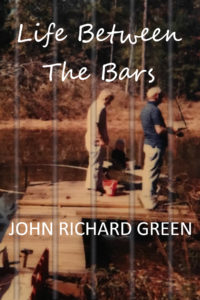Some might say – not much.
No eyewitness to the crime.
No weapon.
No DNA.
No record of violence.
No confession. On the contrary – Charles Mamou has never wavered regarding his innocence. That’s why he didn’t take a deal when he was offered one. He put his faith in the truth and Texas justice nearly two decades ago. That turned out to be a deadly mistake. His fate was left in the hands of Harris County, Texas – a community with a long and well documented history of condemning people to death.
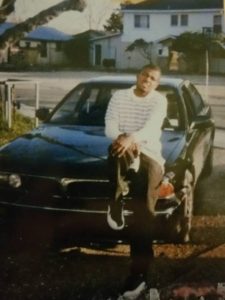 And so Mamou’s trial began. The O.J. Simpson trial was still fairly fresh on peoples’ minds – and Charles was a black man in Texas. The words of the Judge set the tone from the beginning, as he referred to O.J.’s trial that ended in an acquittal, stating that was, “not going to happen here. This is the real world. It is not California.” The Judge also compared being a juror to, “being a pallbearer at a funeral.” This was followed up with, “the State is going to seek the appropriate punishment in this case; that is, their claim that it will be the appropriate punishment, punishment of death.”
And so Mamou’s trial began. The O.J. Simpson trial was still fairly fresh on peoples’ minds – and Charles was a black man in Texas. The words of the Judge set the tone from the beginning, as he referred to O.J.’s trial that ended in an acquittal, stating that was, “not going to happen here. This is the real world. It is not California.” The Judge also compared being a juror to, “being a pallbearer at a funeral.” This was followed up with, “the State is going to seek the appropriate punishment in this case; that is, their claim that it will be the appropriate punishment, punishment of death.”
The case against Charles Mamou revolved around the hearsay testimony of individuals who were all involved in criminal activity, and some very questionable ballistics testimony regarding a never recovered gun.
But, everyone agreed on where everything began. Five men met on Lantern Point Drive, near the Astrodome, for a drug deal that went terribly wrong. Charles Mamou and Sam Johnson arrived in one car. They were met by Deion Holly, Terrance Gibson, and Kevin Walter, who arrived in another vehicle. Unbeknownst to Mamou and Johnson – Mary Carmouche was in the backseat of the second car. Deion, Terrance and Kevin brought a seventeen year old girl to a drug deal they approached with loaded guns.
Things went wrong quickly, and the shooting began in both directions. Terrance Gibson was killed holding a loaded gun – a clear indication his death was the result of self-defense, in which no one was ever charged. The other two men with Gibson, Deion Holly and Kevin Walter were also shot, but survived.
At some point during the shooting, it appears Sam Johnson hopped in the car that he and Mamou arrived in, and drove down the street. Mamou thought his friend had left, although Sam was actually turning around and coming back for him. In that moment, Mamou made a life changing decision. Alone in that alley, he got in the other men’s car and drove away – with Mary in the backseat.
According to Mamou’s testimony, when he realized Mary was in the car – he stopped and asked her to get out, but she refused. He then met up with Sam Johnson and they drove to Howard Scott’s apartment.
There, Mamou got out of the car, asking Mary to get out as well. He was then met by Sam Johnson and Shawn England, another acquaintance. Mamou was crying and upset, and Shawn pulled him aside to say, “those guys got what they deserved.” Shawn and Mamou then went inside, leaving Sam Johnson and Mary outside.
Once inside, Mamou was provided with clean clothes, and Shawn England and Howard Scott went outside to search the car that Mamou had arrived in and wipe it down. Mary was still outside and talking to Sam. Eventually, another friend arrived on a bike – Kevin. They all talked for a little while longer before Sam Johnson, Kevin, and Mary left together.
Mamou left the apartment complex to make a call, and when he returned, he saw Kevin and Sam Johnson come back. Johnson went inside briefly before leaving again with Kevin.
Later that night, Sam Johnson and Kevin returned, and Kevin got on his bike and left. A cab came for Shawn England, who also left. Mamou spent the night in Howard Scott’s apartment.
According to Mamou, Shawn England had taken the gun from Mamou while at the apartment.
Mary Carmouch was later found dead with a gunshot wound to her chest.
The prosecution disagreed with Mamou’s version of events and centered a good portion of its case on an unfired cartridge that was found near Mary’s body. They claimed the unfired cartridge matched the fired casings at the scene of the drug deal gone bad. It was their theory that those casings had travelled through the same gun barrel. The science used to support such a theory is arguable even in the best of circumstances, but in this case – there was no weapon to test the theory out on. The weapon used in the drug deal shooting has never been recovered. So, there was ballistics evidence that is not a certainty in the best of circumstances, but in this situation there was even less certainty, as it was comparing used and unused casings from a weapon that couldn’t even be tested.
The prosecutor falsely argued the match was a certainty. He actually used the word ‘identical’ when comparing casings, and also stated as fact, “this was placed in the same magazine that the fired bullets were placed in, thus, fired through the same firearm.” He lied. The prosecutor simply lied to the jury.
The other ‘evidence’ the prosecutor had was the testimony of five men who were all involved in criminal activity and willing to testify and point their fingers at Charles Mamou. It was never investigated or made clear just how those men might have benefited from their testimony, although it is reasonable to assume they did benefit as they were incriminating themselves with their testimony. In addition to the very real possibility that they received personal benefit for their testimony, three of them were inconsistent and admitted lying and being untruthful with police. None of the men ever claimed they saw Charles murder Mary.
A good deal of the prosecution’s time was spent trying to paint a picture of Charles Mamou as a killer who had killed before, but the reality is – Charles Mamou was never tried for any other killing.
Charles Mamou’s defense attorney didn’t strongly defend his client, but rather seemed to flounder. At one point during the crucial ballistics testimony he stated, “not sure if I understand what that means.” In reference to magazine marks he said, “what is the word I’m looking for to describe what a magazine mark is?”
The total amount of time the defense spent ‘investigating’ Charles Mamou’s death penalty case was under ten hours. The total amount of time Mamou’s counsel spent meeting with ‘the investigator’ was 2.5 hours.
Although all of the testimony available to the defense during the sentencing phase of the trial wasn’t used, the words of those people who could have spoken describe Charles Mamou as kind, generous and respectful.
The thoughts of Claudia Milton, who knew Charles Mamou and his family, were never shared with the jury. “When Chucky was older he would often talk to my son about his problems. My son was on drugs and Chucky would try advise him to do better things with his life. I wanted my son to be more like Chucky. There was times when I went shopping and Chucky was in the grocery store, he would buy my groceries and never wanted any money back. There were many other people in town that Chucky would help buy groceries, pay rent or their electric bill. Chucky helped people.”
The defense also did not share the thoughts of Mark Benolt, who has said in an Affidavit, “To me, Chucky does not have a ‘rough bone’ in his body. I have witnessed him paying bills for friends, family members and other people in the community. Charles Jr. is a friend that everyone wishes to have once in their life.”
Oddly enough, even though all of the testimony that could have portrayed Charles Mamou in a positive light was not pursued by defense counsel, the prosecution was permitted to bring in victims of crimes Mamou was never even tried for, along with referencing these other deaths throughout the trial with misleading references to, “evidence that Mamou had killed two other people.” And in describing those deaths that Mamou has never been tried for, it was stated, “Terrence Gibson. Anthony Williams. They were brothers. They were sons. They were dads.”
Charles Mamou was never on trial for any other murders, yet victim impact statements were allowed from relatives of Terrence Gibson and Anthony Williams. Emotion filled testimony was given detailing how the loss of those men impacted their families. This was followed up by the prosecution, “And when he pulled the gun and he fired and killed Terrence and Anthony, he ripped those families apart. He devastated and destroyed. And that’s all he’s ever done, with his drugs, with his guns.”
During the penalty phase of the trial, the Judge also stated, “it’s no more different than it is when we’re raising kids. It’s just no more different. If we ever told a child not to do something once and the child does it again, we’re going to react one way. If we have told a child ten times in the last thirty minutes not to do something and they have done it for the tenth time, we’re going to react a different way.”
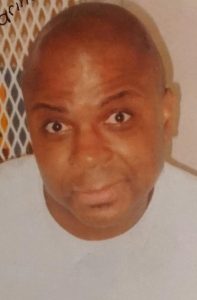 The U.S. Fifth Circuit Court of Appeals has denied Charles Mamou’s last appeal, and he is currently awaiting an execution date.
The U.S. Fifth Circuit Court of Appeals has denied Charles Mamou’s last appeal, and he is currently awaiting an execution date.
Regarding the denial of his final appeal and the knowledge that he will soon be executed by the state of Texas, Mamou recently expressed his frustration, “Nobody believes in me! I love me. America isn’t the land of equality. Never has been. Let’s not pretend. Let’s admit what it is. And before I take my last breath, the whole world will know they fucked me over. That will be the symbol of why I lived.”
If only we didn’t need a dead body to know that the trial of Charles Mamou wasn’t just.
TO CONTACT CHARLES MAMOU:
Charles Mamou #999333
Polunsky Unit 12-CD-53
3872 South FM 350
Livingston, TX 77351
Related Articles: Texas Death Sentence Clouded By Irrefutable Doubt;
Awaiting Execution – “Have You Ever Felt Like You Can Taste The Future?”;
Because They Can – Execution In Texas;
Letter From Key Mamou Witness Contradicting Testimony;
Testimony Worthy Of An Execution? The Mamou Transcripts Part I;
The Mamou Transcripts – Part II;
The Mamou Transcripts Part III – Death Sentence Built On The Testimony Of Dealers
![]()
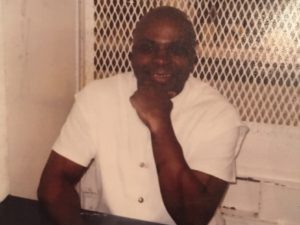
 A week before Christmas, 2013, one of my female students lost her fifteen year old brother to suicide. He had been bullied through elementary and middle school and decided he didn’t want to live anymore. My student, along with her family, found him dead in his bed – no note, no explanation. Just gone.
A week before Christmas, 2013, one of my female students lost her fifteen year old brother to suicide. He had been bullied through elementary and middle school and decided he didn’t want to live anymore. My student, along with her family, found him dead in his bed – no note, no explanation. Just gone.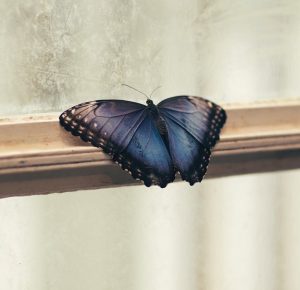 degrees, a lot better that the 95 it had been. I fell asleep easily, listening to Jonny Lang, and slept the sleep of someone with a clear conscience. It was around 1:30, and I had a little time before dinner and the next insulin shot.
degrees, a lot better that the 95 it had been. I fell asleep easily, listening to Jonny Lang, and slept the sleep of someone with a clear conscience. It was around 1:30, and I had a little time before dinner and the next insulin shot. And, then it was Saturday. At around 2:30 p.m., I look out the window and saw my next visitor. It was in the alley between the buildings, crawling through the little bit of water left behind by the showers – a turtle. It was about the size of my hand and making his way to an important turtle meeting. Or maybe he was in a race against a rabbit that can’t possibly win – turtles never lose a race.
And, then it was Saturday. At around 2:30 p.m., I look out the window and saw my next visitor. It was in the alley between the buildings, crawling through the little bit of water left behind by the showers – a turtle. It was about the size of my hand and making his way to an important turtle meeting. Or maybe he was in a race against a rabbit that can’t possibly win – turtles never lose a race.